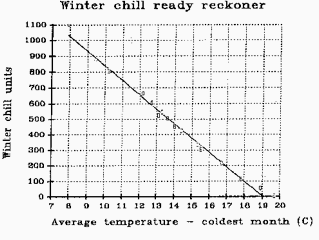There’s a sweet smell of honey wafting by as I approach the wall. I’ve just parked up and apiarist Gavin Smith arrives, up from Sydney but a moment later. Elspeth greets us with an offer of a cup of tea, a lovely start to this misty morning. We’re here because there are bees living in her wall. This is part one of an attempt to encourage them to relocate from the wall into where they are wanted (in my hive).

First up we clear the bushy growth which hides a small hole in the wall where bees are getting into the wood panelling behind which they’ve made their home. Ta-da! Next Gavin (also a carpenter!) constructs a small shelf on we sit the base of the bee box close to the hole.

A couple of guard bees follow us around in turn and we stop a couple of times to walk away from the scene to take the warning level down. Considering the amount of disturbance we’re creating in their routine the colony is not becoming very aggressive and taking it slowly they seem to adapt to each change we introduce without too much drama. The sun comes out, the day is slowly warming up and so the bees becoming more active now…

One guard bee tails Elspeth and loses its stinger on her shirt, another ends up trapped in a sleeve and that bee pings stinger number two in Gavin’s arm before the job is complete. We lose a third squished on the new base, but this doesn’t seem to cause the colony any further distraction. With pollen gathering ramping up, a wall full of honey behind them we appear to be a bit of a nuisance, but no real threat apparently perceived. Still, its enough of a warning for now. Out comes the smoker which pumps out delicate wafts of pine needle smoke, which Gavin uses to direct them away from the hole so he can get a drill in to the hive’s existing entrance space. Next he drills into the wall to make the hole a bit bigger (and rounder) and inserts a small piece of tubing to fit snuggly inside. It doesn’t take long for them to find their way around and inside the wall again.

Next the base of my bee hive goes onto back onto the shelf. The bees spend a little while getting used to the floor of this hive, not landing so well on the metal plate to begin with. Although they get used to this new entrance fairly quickly its a bit of a hop up, so Gavin adds a little stick from the base which they immediately use as a ladder to the tubing entrance.

Here they are coming in through the entrance and lining up from there to the hole in the wall.

Now we have them landing on the base and going in through the tube we’ll add the rest of the hive bit by bit.
In a couple of hours then the first part of this job is done, Gavin heads ‘down the hill’ to help some more bees transition from one home to the next. Before he does, he leaves us honeycomb from a hive in the Rocks. Yum! Instant gratification for us.
For more details and pictures from this morning’s bee adventure with Gavin here:
You’ll find Gavin Smith at the Sydney City beekeepers’ meetups and demonstrating the ways of bees at various community events around Sydney. I’ll be back with more parts of the bee hive later on today and over the next few days(/weeks/months?) and will post updates here. Will the queen resettle, or will we ‘just’ end up with a boatload of honey?
—
Update @4pm
A few hours later, lots more bees hanging outside the wall than usual. 
Looks like a move maybe already underway! I was going to add the box at this point but it looks way too busy out here for bee novice Kat to mess with.
Update at 6:30pm
Once I’ve seen my hens go to roost for the night I think, ‘well that’s animals going to bed’, and head out to see where the colony in the wall is up to. They’ve settled down again; was this a demo for the other bees ‘come see how to get in now?’ or are they on their way somewhere new? So much bee language to learn!

I ready the smoker, kindly lent by local beekeeper/s. I’m no so secretly proud of being much quicker at lighting it up this time). I pick up gloves and move in with the empty bee box. Gently smoking the bees as I go I put the box down as far in as there are no bees along the edge of the base, something I saw Tim Malfroy demonstrate when handling a hive to harvest honey at a fabulous natural bee keeping workshop he runs. And I leave it there, dashing away, dash dash! They’re onto me! I’m learning to recognise the swoop of the guards’ intent, and walk away quickly several times to avoid being made an example of.
Today, I declare quietly, is not Sting Kat day, ladies. Thinking calm assertive thoughts, on approaching them once more I pick up a stick to flick remaining bees out from behind the box. It’s a bit tricky as I cant see well from the front what lines up with what, and I’m quite vulnerable to having a beeline made for me by some well posted sentries.

From the space between the wood panelling and the back of the bee box, a distinct tone is audible and carries along the side clearly, I hear it change, and this seems like ‘on alert’ to me. I want to stay and listen but this is ‘no sting for Kat day’ so I keep going. There’s definite confusion as the remaining bees walk the circumference around the entrance which I’ve just mostly blocked off.
I make the smallest movements I can to begin with, but see I am still agitating them so I work quickly to give them maximum time to work out a new route in before bedtime. Three or four jiggles and the box is in place. I haven’t secured the pipe into the hole at the back but it’s lined up well enough for the bees to get back in, if they can work out how to get there.

It’s around 7:30pm now, I stick around to make sure the last couple of dozen bees figure out their way around the box and in the tube, all but a few are in by the time I leave. Phew!
Update Friday 22/02/2013 – 8:15
Beetown is pretty quiet when I arrive on this typically damp Katoomba morning, and its a little cooler than it has been. I spy a few early morning bees clustering around the tube entrance, but no buzzing overhead yet. This is good. I came after a very swift coffee and zoomed over for the next phase of box installation before community gardening this morning. I have an hour and a half, and I’m playing it by ear. The smoker is in the car and stays unlit today. I figured on coming early enough not to disturb the colony so this is going to plan. (yay). The box is above me so I don’t see if activity is building inside the box, as I add the three sided frames that come with this warre hive. Last one in, just as a few more bees poke out from the box and start showing some interest, crawling along the frames and starting to occupy space in flight around the box. Great timing! I think, but too soon. Oh no! the frames are in the wrong way round. So much for swiftly and methodically. Still, its not a drama, I take frames out and neatly replace them 90 degrees to the original position, and here they’re sat correctly lined up in the rebates of the box. I slowly creep the mesh over the top giving bees room to come in or go out working around bees coming and going. Will they find their way out the front again? Oh yes! They’re not even slightly phased. Moments later the first bee exits from one of the holes designed to be an entrance. First one, then two on the right, then the same pattern on the left, within seconds half a dozen more from the right. Ok Nothing to worry about here.
On goes the quilt box on top (providing insulation) finally top the construction off with the metal finished roof. Now we wait. Pictures uploading now at Flickr.com
















 The band of blue is also narrowing as it fades meaning winter is also getting shorter. In the upper mountains its a familiar story, the snows don’t come down in big drifts like they used to. In Katoomba if the temperature rises as predicted, we’ll see an increase in temperature by 2 °C on average over the year, which will bring Katoomba chill hours down to about 1000. That will knock off very few varieties out of production. In Springwood, which is currently marginal for high chill requirement fruits, its a different story. That 2° C increase in Springwood would drop their chill hours well below into 900 , so they’ll either have to get a bit nifty with engineering cooler microclimates around their existing chill requiring trees or perhaps get more familiar with trees traditionally grown at latitudes nearer the tropics.
The band of blue is also narrowing as it fades meaning winter is also getting shorter. In the upper mountains its a familiar story, the snows don’t come down in big drifts like they used to. In Katoomba if the temperature rises as predicted, we’ll see an increase in temperature by 2 °C on average over the year, which will bring Katoomba chill hours down to about 1000. That will knock off very few varieties out of production. In Springwood, which is currently marginal for high chill requirement fruits, its a different story. That 2° C increase in Springwood would drop their chill hours well below into 900 , so they’ll either have to get a bit nifty with engineering cooler microclimates around their existing chill requiring trees or perhaps get more familiar with trees traditionally grown at latitudes nearer the tropics.









